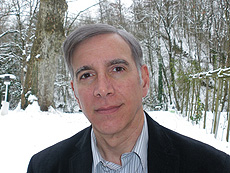Joe Incandela elected CMS spokesperson
 |
| Joe Incandela
|
Members of the CMS collaboration have elected as their new spokesperson Joe Incandela, a physicist at the University of California, Santa Barbara. He is the first scientist from a U.S. institution to be elected spokesperson of an experiment at the LHC.
Incandela’s primary aim as spokesperson will be to help CMS collaboration board chair members create a sustainable mode of working together that allows them to fulfill all of their future goals, he said.
“I want us to have the feeling of a team or a family,” Incandela said. “We’re going to spend the next 20 or 30 years together.”
Incandela, a former member of Fermilab’s CDF experiment, will start his two-year term on Jan. 1, 2012.
“It’s going to be an exciting time,” said US CMS physicist Nick Hadley, who served on the election committee. “We’ll be taking data and publishing. Then the spokesperson will need to carefully choreograph the upgrade, since the CMS detector can only be opened in a particular sequence.”
Incandela will lead scientists from almost 40 countries in his new role.
Incandela has served as CMS deputy spokesperson since January 2010, when current spokesperson Guido Tonelli appointed him to the job along with CERN physicist Albert De Roeck.
Incandela earned his Ph.D. from the University of Chicago. He went to Switzerland as a CERN Fellow in 1987 to study W and Z bosons and then on to INFN in Italy to search for charged Higgs bosons. In 1991 he came to Fermilab as a Wilson Fellow and joined the CDF collaboration, where he co-led the experiment’s successful first observation of top quarks with
secondary vertex b-tagging. He remained part of the CDF collaboration for 18 years.
In 1998, he took charge of the US CMS tracker group as a member of the UCSB faculty. He returned to CERN in 2007 to serve as deputy physics coordinator for CMS and has been at the laboratory full-time since then.
-- Kathryn Grim
|